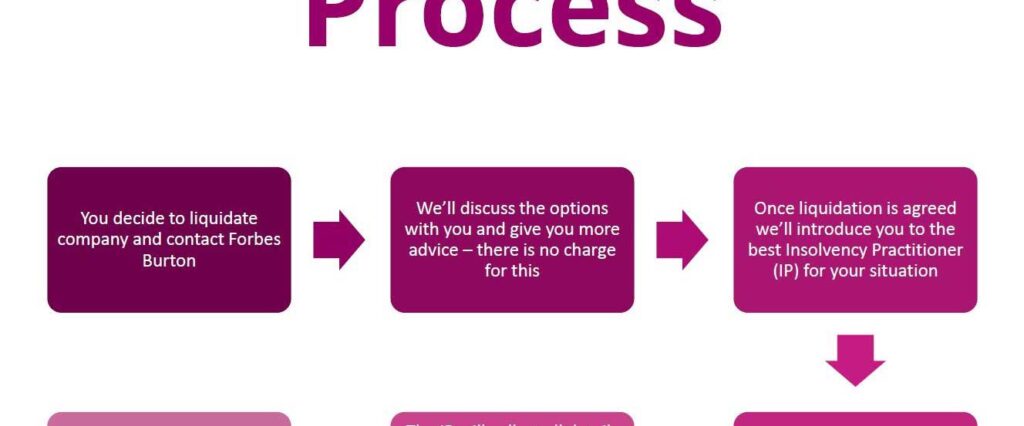
How long will it take to liquidate your company?
A liquidation can be done in as little as a month however, in practice it depends on the case, some can take 3 months, 6 months or even longer.
If there are a lot of assets to be realised and sold for example the process could take a lot longer, in some cases in could even take a couple of years.
In this article we aim to break down the liquidation procedure to indicate how long each step is likely to take.
You’ll need to know how liquidation works before you start, so that the necessary steps can be taken both for yourself and for your company.
In any case it is important to realise that the way to ensure a liquidation is done as quick as possible is to get all the paperwork compiled as quickly as you can.
You will need to co-operate with the practitioner completely once you have made the decision that they are the right party to deal with the company for you.
Thinking of liquidating your company?
Get a free, no-obligation quote today Limited Company Liquidation Quote →
What do we mean by liquidation?
If your company is insolvent (cannot pay its debts when they fall due), there are two liquidation processes; voluntary (CVL, or Creditors Voluntary Liquidation) and compulsory (initiated via Winding up Proceedings).
Compulsory liquidations are (in the vast majority of cases) forced by creditors, they will go to court and ask for it to be wound up – if a Winding up Order has been issued against your company, you will not have a choice in the matter without taking quick action.
The closure of the company will be the result of either process; ceasing to trade, redundancy payments for any eligible employees and directors, and sale of any assets will be appropriate in either case.
Why get a Creditors Voluntary Liquidation (CVL) instead of waiting for a compulsory liquidation?
- Speed of the process
- Less intrusive investigation into director’s proceedings (although all liquidators have certain responsibilities to uphold)
- Remain in control of the process
- You get to choose your liquidator
- The appropriate time for the company to go into liquidation can be chosen (if you have acted in good time)
- Little risk of wrongful trading accusations – waiting for a creditor to wind the company up rather than doing it yourself poses the risk of continuing to trade an insolvent company, which is classed as wrongful trading
- There are several ways to fund the CVL process; it may not burn any holes in your pockets
In the vast majority of cases, if it has got to the point at which a Winding up Petition has been threatened, the company needs to close.
Our advice is always to beat the creditors to it to avoid personal liability and leave your options open.
A brief summary of the liquidation process:
1. Voluntary liquidation, or CVL (Creditors Voluntary Liquidation)
A Creditor’s Voluntary Liquidation is the form of liquidation where directors decide to liquidate a company. This (usually) occurs when they realise they’re insolvent, with no hope of restructuring without a complete re-start.
First, several bits of company information will need to be provided to the practitioner. The majority of the insolvent company’s board then are required to sign a resolution to enter the company into liquidation.
A general meeting will then be held between shareholders, 75% of whom must approve this decision to move on to the next step.
On the same date, creditors can attend a separate meeting to approve the choice of practitioner and the decision to place the company into liquidation. A half an hour gap between these two meetings is sufficient.
It is now possible for liquidators to assume that creditors consent to the liquidation, unless they have objected to the process. This is referred to as ‘deemed consent’.
Creditors meetings can now be done virtually via video conferencing. A physical meeting can be requested under certain circumstances.
Download our handy Liquidation Process Diagram
2. Compulsory liquidation (following a winding up petition)
This process is usually initiated by a creditor, and if approved, the company director loses all control of proceedings, including asset sales.
The process takes much longer than a CVL and further to this, the Official Receiver is ordered by the government to charge tax at 17% on all assets.
In the vast majority of cases, a compulsory liquidation is first warned of via service of a statutory demand, which allows the company 21 days to pay (or 18 days in which to contest the debt).
If neither of these options are taken, the creditors’ next step is to apply to for a winding up hearing with the court. A winding up order will be served, and from this point directors have between 7 and 14 days before the court hearing.
At the hearing, the winding up order will be served unless legal representation is used to demonstrate that the debt is not valid. The creditor must be owed upwards of £750.00 to apply to wind the company up.
How long does it take to liquidate a company once the process has started?
For a Creditor’s Voluntary Liquidation (CVL), the initial appointment process is probably the most laborious part for the director due to the information that needs to be provided by them – this part usually takes 1-2 weeks.
90% of shareholders must agree to a short notice process, and if this is approved then the company can enter liquidation within 7 working days (this is the minimum notice required for company creditors).
More typically, this part will take 2 weeks. However, the date is relatively flexible to the end that all of the necessary information needs to be collated before this point.
Once the practitioner has been approved, their work really begins; asset valuation and sale will be processed, and the necessary inquiries carried out.
The paperwork required from the practitioner is not to be under-estimated; these parts could take 1-2 years or even longer. The bigger the company with regards to assets and creditors, usually the longer the liquidation will take.
In the case of a compulsory liquidation (or winding up order), the time up to the court proceedings is usually around 3 months. In both cases, however, this is just the time that it takes to approve the liquidation.
3 months to 3 years can be added to this time to liquidate assets, agree creditors’ claims and distribute any available funds.
No time limit has been legally applied to company liquidations – usually, it takes between 6 to 24 months for the liquidation process to be completed. This, of course, depends on the form of liquidation, the company’s size and its position.
The liquidation may take longer if the Insolvency Service chooses to investigate the possibility of fraudulent or wrongful trading. There is a possibility of personal liability if a director has acted improperly with regards to the creditor’s interests. However, avoiding liquidation will not negate this fact, but make the situation worse further down the line.
What happens after the liquidation?
After the company has been liquidated, a final report will be sent to creditors by the practitioner, outlining the company inquiries and findings under directors’ conduct.
Providing that the director has been found to have acted reasonably, a redundancy payment can be claimed from the government if they were on the company payroll for more than 2 years. They are then able to use this money as they see fit – either to fund a new venture or within a completely separate role.
Need to speak to someone?
I hope this article has helped explain how long it takes to liquidate a company.
If you would like to find out whether a liquidation would be suitable for your company you can take our simple online Liquidation Test or you can also speak to our advisers by calling us for free on 0800 975 0380 or emailing us on advice@forbesburton.com
Author

Emma Blyth
emma.blyth@forbesburton.com
Related Articles
We're here for you.
As a dedicated team of Advisers and Consultants our aim is to help you fix the issues and solve the problems within your business.
Find out more →


